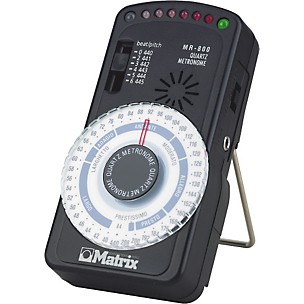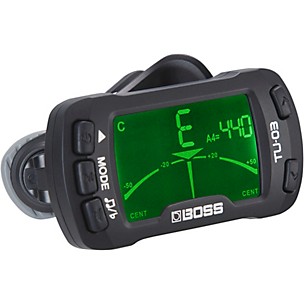Tuners & Metronomes
About Tuners & Metronomes
For centuries musicians have relied on various devices to tune their instruments or maintain a steady tempo. The tuning fork was invented by John Shore in the early 18th century. By striking this steel two-pronged fork with an object it resonates at a specific pitch and emits a pure musical tone. Another 18th-century tuning device is the pitch pipe which was used to set the pitch for choirs and other acoustic instruments. Tuning forks and pitch pipes still exist today but most musicians opt for electronic tuners. These tuners detect musical notes and display them on bright LCD or LED screens. While simple tuners display tuning for only a single note("A" or "E") or the 6 notes in the standard tuning of a guitar chromatic tuners can tune all 12 pitches. Clip-on electronic tuners are favored often by guitarists and bassists; they attach to the instrument's headstock and detect the tuning of strings through vibrations. Pedal tuners are also popular especially among live performers (the Boss TU-3 Chromatic Tuner is an excellent example of this type).
Many modern tuners offer additional features and functions like metronomes. Dating back as far as the 9th century metronomes were used by countless legendary composers to keep the beat or tempo of a musical piece (including Beethoven). By measuring beats per minute metronomes make ideal practice tools and their tempo can even be adjusted. A wide range of wind-up and electronic metronomes are available and you can even find software programs that will turn your computer into a metronome. Some popular tuner and metronome brands are Boss Cherub Tuner Delta Lab Snark and Korg.

